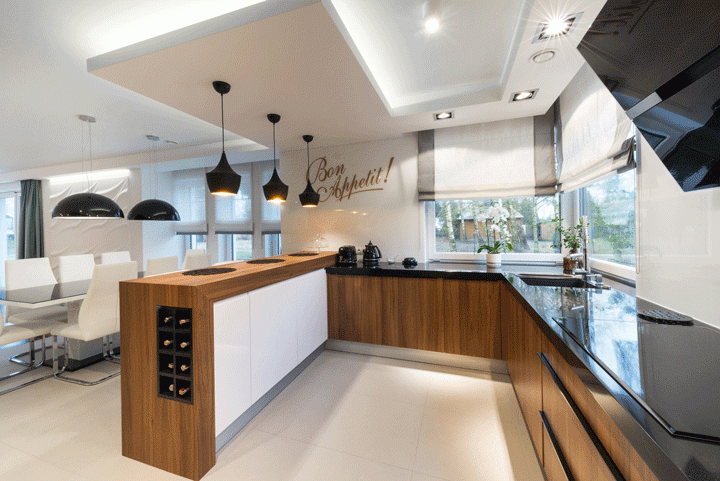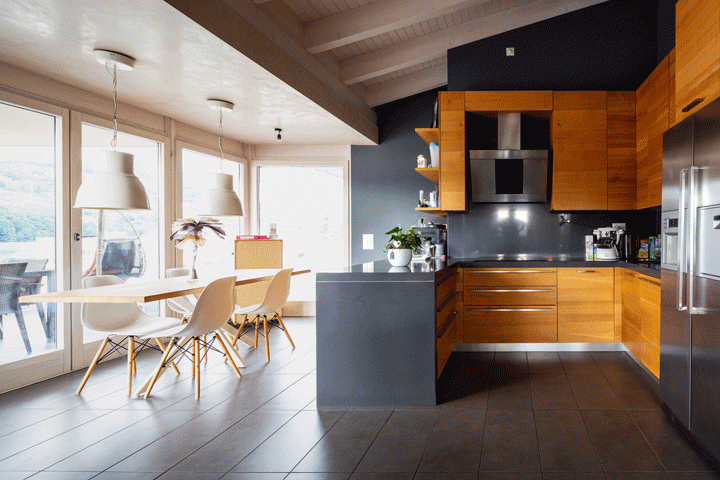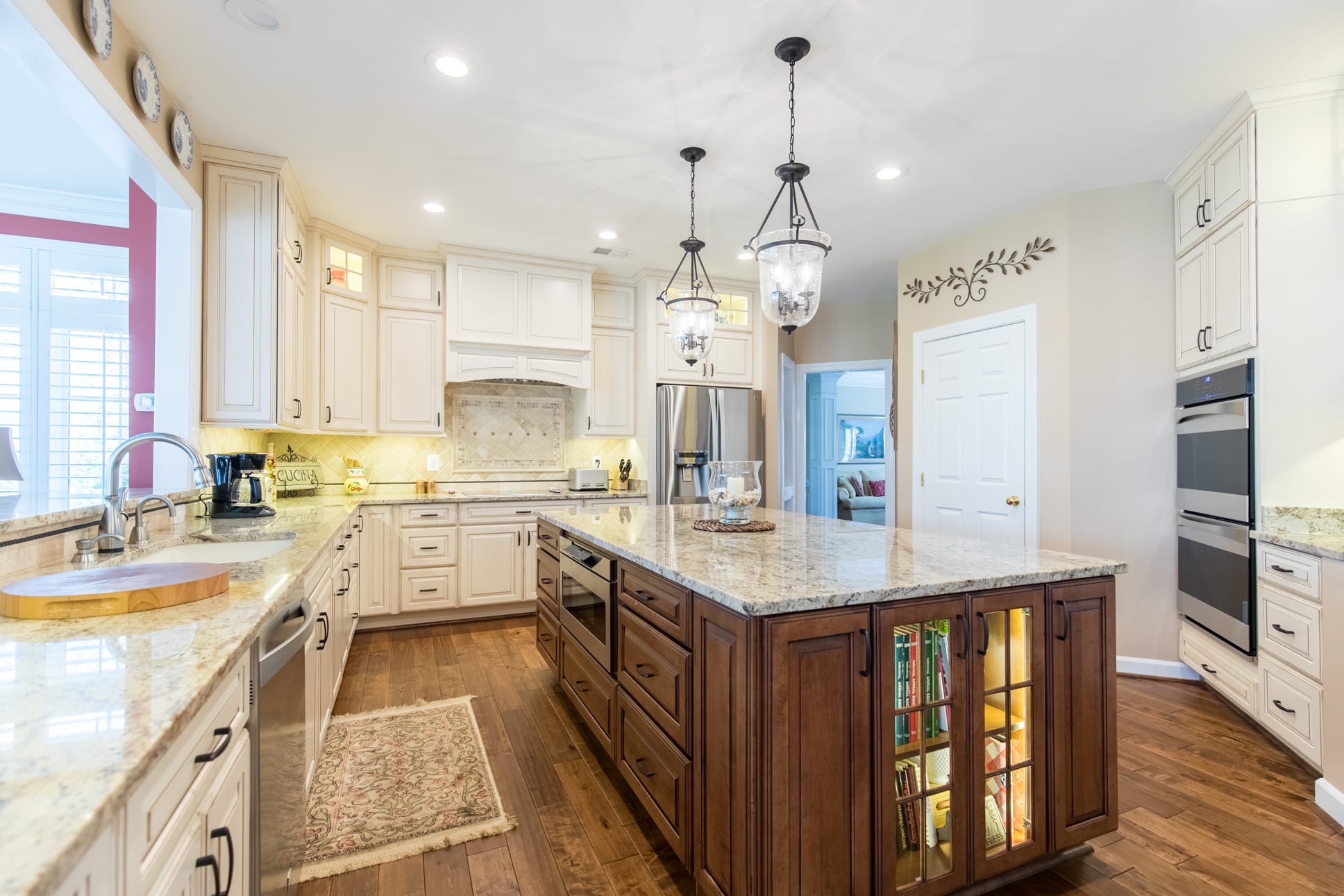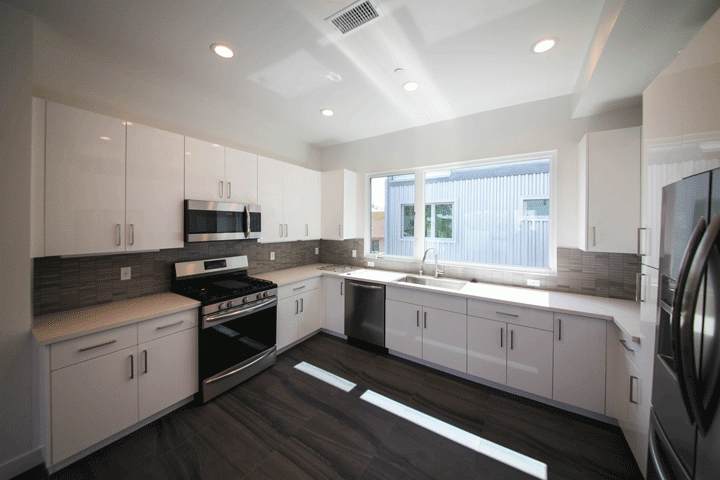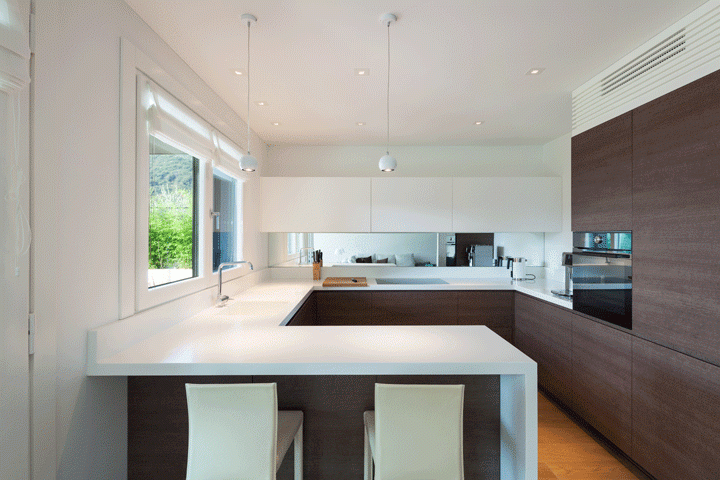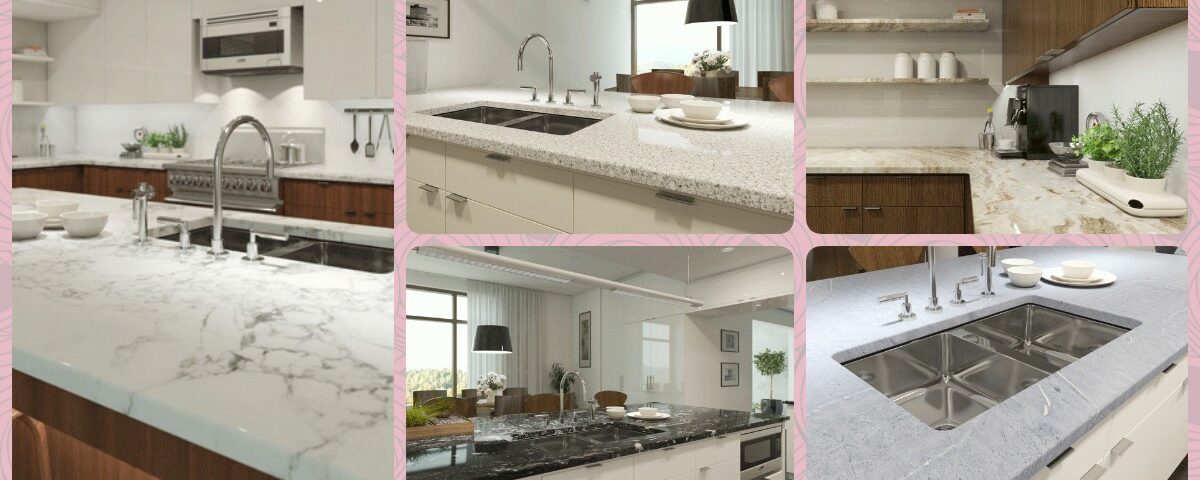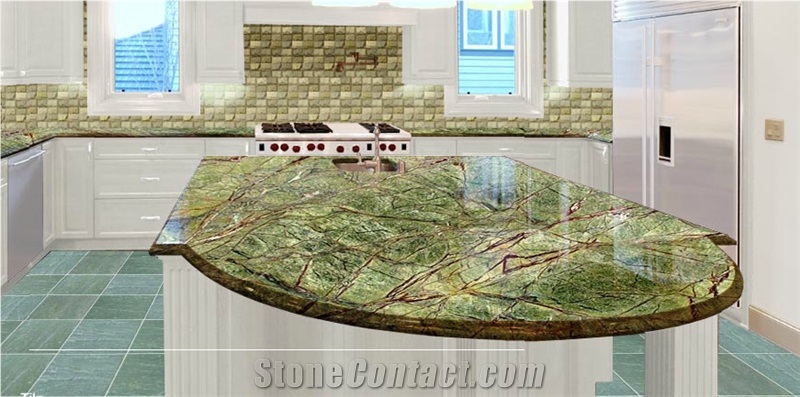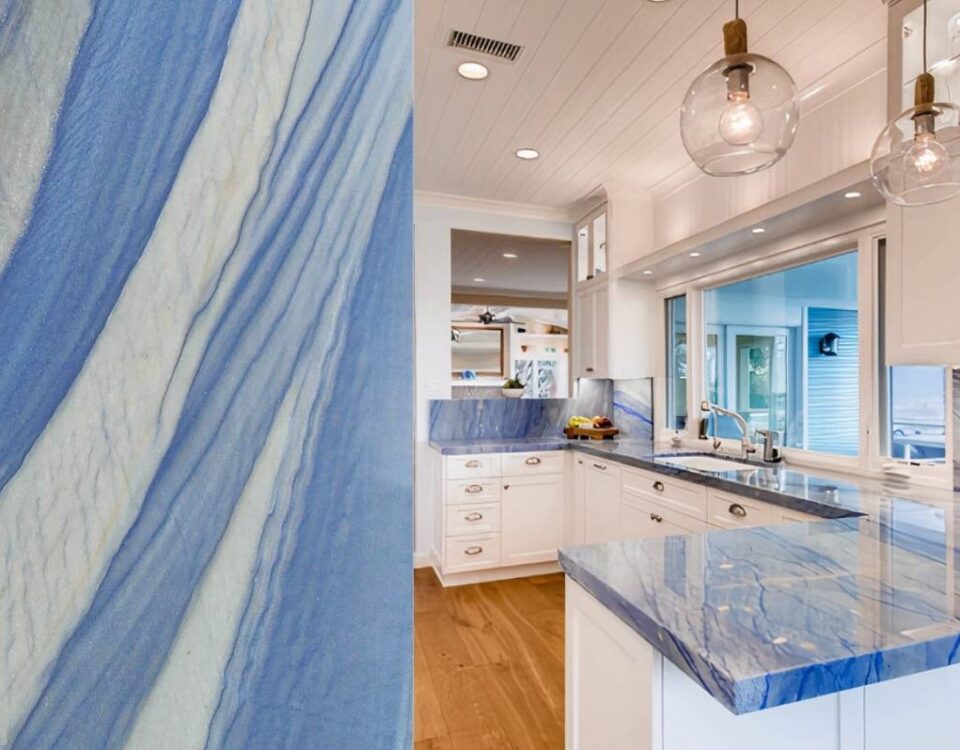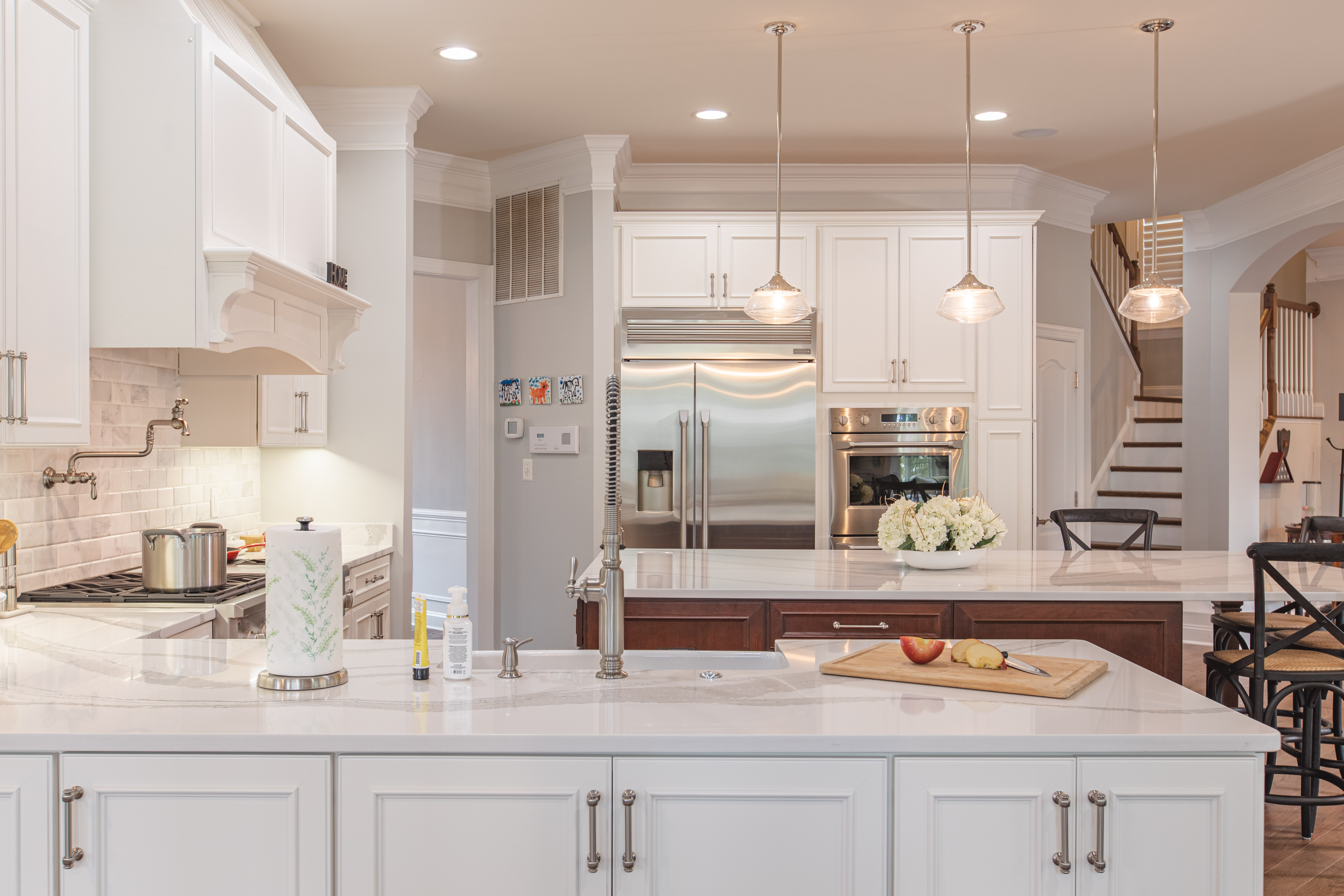
Why Quartz Is So Much More Than Merely A Design Fad. Some Of The Most Notable “Pros” Of Quartz
November 30, 2019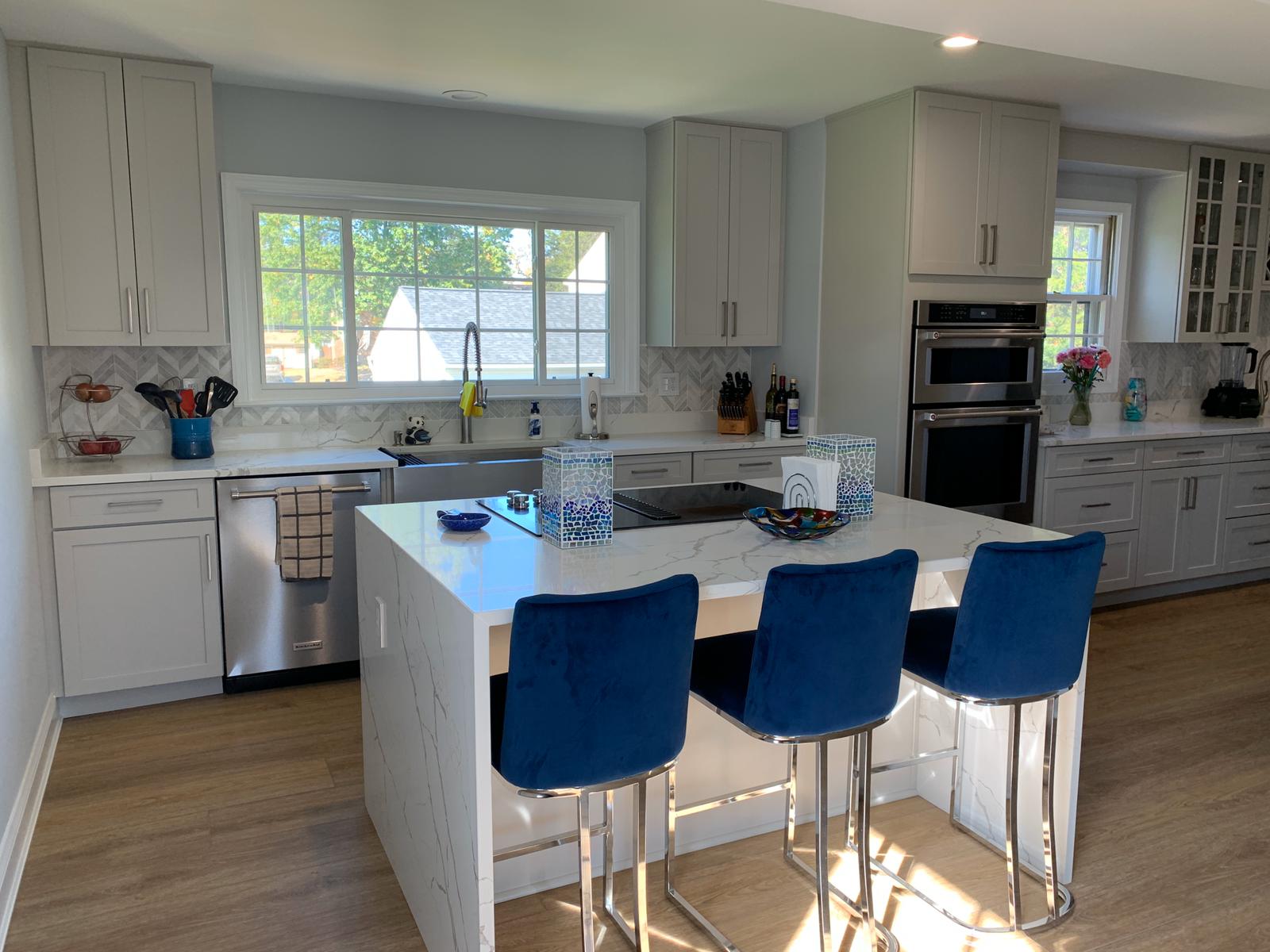
Quartz Countertops Are A Low-Maintenance Option, Perfect For Any Busy Kitchen
December 4, 2019The natural aesthetics and sheer beauty of Granite can be enjoyed from the floor to the ceiling in a bathroom. A few great examples are Granite tub surrounds, Granite shower enclosures, and Granite vanity tops.
The kitchen is often the busiest room in your house. That means your countertop material will have to withstand hot pots and pans, wet dishes, spills, and regular food preparation. The perfect countertop should look great and be functional at the same time. Familiarize yourself with the best kitchen countertop options so that you can decide which one is best for your budget and lifestyle.
Quartz
Quartz is one of the most popular kitchen countertop options today. Quartz refers to an engineered stone, which is made by combining ground quartz particles and resins. It is one of the most practical countertop materials, due to the low maintenance and high durability. Quartz does not require special care – such as sealing – and is easy to clean.
Appearance: Quartz can mimic granite, marble or any other natural stone and comes in an extensive variety of colors and patterns. More and more manufacturers are developing countertops that look like natural stone.
Durability: Engineered quartz is one of the most resilient countertop materials available on the market. Because of its low water absorption, it doesn’t need to be sealed and is highly stain resistant.
Still, it’s not infallible. Using abrasive cleaners is not recommended, as they will eventually dull the stone’s finish. Leaving hot pots and pans on the countertop can also mar the color over time, and excessive cutting on the surface can lead to scratches.
Granite
Granite is the most durable natural stone that comes in slabs, which are cut to size to fit any kitchen countertop needs. Granite countertops are resistant to heat and scratches, and comes in hundreds of unique colors and patterns. However, the material is porous and must be sealed. Taking this simple precautionary step can prevent stains and help maintain the stone’s finish.
Appearance: Every piece of natural stone is different, and no two countertop surfaces will be exactly the same. Granite can be consistent in pattern, or have a veins and swirls. The wide range of colors and patterns will provide homeowners with the special look and feel they want to achieve.
Durability: One of the reasons granite is such a popular choice is because of its incredible durability. Hot items can be set directly on granite surfaces, which makes the material one of the more convenient countertop choices. Although you can cut directly on the granite surface, it’s not a recommended practice, as it will dull the blade of the knives. Sealing granite countertop every 6-12 months is recommended practice by professionals.
Marble
Marble is an iconic kitchen countertop option, and its appearance can be stunning. This natural stone is warm and full of character. Marble countertops stay cool even in the heat of summer, which can give you the motivation to turn on the oven in the middle of a heat wave. But marble isn’t the easiest surface to maintain. It’s soft and porous and like granite it must be sealed to avoid staining. Acidic substances, such as citrus juices, wine or milk spilled on the stone should be cleaned immediately to avoid etching. Marble is also soft, which makes it prone to chipping and scratching, however these imperfections give it a charming look over time.
Appearance: Marble slabs come in many colors, usually with a certain amount of irregular veining. Classic marble countertops are often white with subtle gray veining, but options in beige, brown and black are becoming popular as well.
Durability: Marble is one of the softer options for countertops when it comes to natural stone. Therefore, it’s more likely to get scratched, dinged, and stained with regular use. Marble can be purchased with a polished or a honed finish. Honed marble has a dull surface which helps to hide some scratches and etching. Polished marble is glossy and more resistant to staining than honed marble.
Quartzite
Not to be confused with quartz, quartzite is a natural stone that has a neutral color and swirling veins, which are reminiscent of marble. It’s fairly resistant to heat, but like marble needs to be sealed on regular basis. Most quartzite countertops will have a sparkling surface when light is reflected of its surface due to quartz crystals in the stone.
Appearance: Quartzite countertop materials are usually white with gray undertones. The stone is fairly light and may include faint rosy or blueish hues. Veining can vary from very subtle to prominent. Quartzite use as a countertop material is relatively new, however it’s quickly taking over the market as an alternative to marble.
Durability: Quartzite is harder than marble and is less prone to chipping, however it’s very porous. It’s important to seal the stone on regular basis to maintain its natural beauty.
Soapstone
Soapstone is a softer natural stone. It’s well-suited for rustic kitchens and many say that it offers more warmth than other stone countertop choices. Soapstone countertops are easy to clean, and you can set hot kitchenware on them without damaging the material.
Appearance: Soapstone is usually dark gray or green and has light gray or white veins running through it. The marbling can be intense, or you may find a piece of soapstone that has a fairly uniform color. The thickness of the slab can vary depending on user’s needs.
Durability: It’s non-porous and doesn’t require the sealing that other natural stones need to repel stains and keep bacteria out. Soapstone however is prone to chips and scratches, because it’s fairly soft. It can be re-polished if scratches are too prominent to minimize the visible damage.
